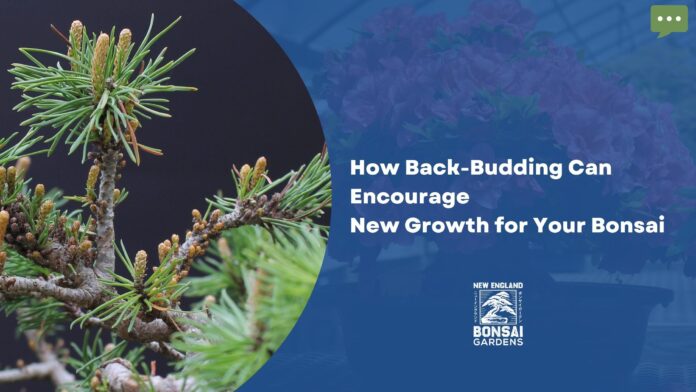Bringing up Bonsai plants is a very dynamic process. Bonsai plants bring a sense of nature and tranquility to any space you put up. Growing and styling a Bonsai can be an extremely rewarding process.
One of the most crucial aspects of developing Bonsai is how your plant responds to the process of pruning. Other factors like branch breakage (planned and unplanned), disease, freeze damage, and even fire that breaks out in the wild can affect how your plant will thrive and grow.
In some species of Bonsai, these factors will activate the buds that were lying dormant in the shaded areas. This way, you can develop new branches on your Bonsai tree. This technique is called “back-budding” – a method of training bud growth further back along the branch or the trunk of your Bonsai tree. It is done by simply pruning the apical growth. Moreover, if growth is non-existent on some tree branches, you can encourage new growth through the process of back-budding.
Back-Budding is not just a reaction to pruning but pinching as well. Both the processes activate dormant buds back away the parts of the plant where you see active growth happening. So, where does new growth happen? Well, it happens deeper inside the tree structure along the interior branches, crotches, and in a few cases, the main branches of the tree or the trunk.
Keep in mind not to confuse back-budding growth further back in the plant with growth that occurs as a result of light pruning or pinching. The latter will make a plant bushy by activating buds near the active ends of the branch. Merely Pining and light printing is not enough for back-budding. It is done for filling branches and foliage pads. You need to do vigorous pruning to trigger buds further back within the tree.
Is your tree damaged or dead-looking? You can think of undertaking back-budding as a way to enhance the appearance of your tree. Not only can it act as a visual saving grace, but it can also be used to balance the tree’s energy. As you can see, Back-budding can be used to fulfil a host of things.
- A fresh, new branch can be encouraged to grow from a back-bud from an area where there was no branch before. This new branch will fill the spot. This ultimately enhances the appearance of the tree.
- A new branch can be brought up from an area where a branch was lost. No better saving grace for your tree! You will love how visually striking your tree will look post-back-budding.
- A group of small branches collectively called a “pad” can be revitalized further back from the end so that the pad can be fuller and bigger. It still needs to be short for styling purposes.
- Want to style your Bonsai to your taste? You can prune your Bonsai aggressively for this purpose. This kind of severe pruning will stimulate back-budding deep inside the tree. These new buds will then develop into branches. You have the chance of picking new shoots to grow new branches positioned deep within the tree.
- You can also vigorously prune an individual branch to shrink the size of your Bonsai for aesthetic purposes. Whatever back-budding that happens, as a result, will aid in re-creating and filling in the pad on the trimmed branch.
You should know that some plant varieties back-bud effortlessly, whereas some not so much. Some varieties do not back-bud at all. Even in plants that back-bud, how it happens varies between species.
Some plants that back-bud beautifully include elms, maples, myrtus, myrsine, many junipers, cotoneaster, cypress species, privates and most ficus. Japanese boxwoods do back-bud, but the end result may not be all that appealing. Pines do not back-bud at all, but there are exceptions.
The Japanese black pine can back-bud, provided it undergoes proper de-candling and needle removal. We recommend you consult with those familiar with Bonsai Japanese black pines. Japanese black pines culture can be rather daunting, so here is a video by Ryan Neil. In the video, he will take you through back-budding and everything you need to know about culturing Japanese black pines.
When applied properly, the back-budding process can improve your Bonsai or salvage a damaged Bonsai. The process, however, is less than perfect. Don’t let that deter you.


